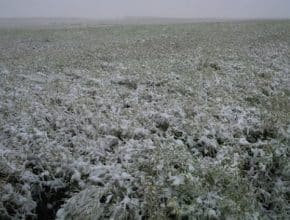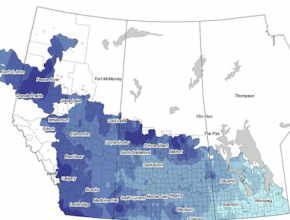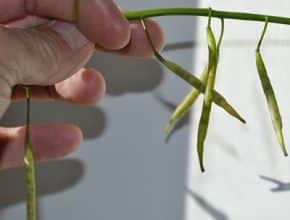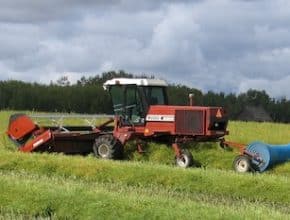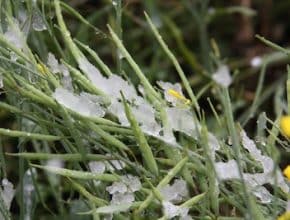Man, snow?! Snow doesn’t do as much damage to standing canola as the frost that comes with it. If frost is light, moisture from the snow might actually provide canola with some protection. (Photo credit: Garth Donald) Frost risk. Swathing before 60% seed colour change will reduce yield, but heavy frost will reduce yield, too. If growers have a lot…
September 10, 2014 - Issue 23
-
-
Here are two WeatherFarm maps. Click the map for a link to the original on the WeatherFarm site. The frost map is for yesterday morning. Many areas that had frost yesterday had frost again this morning. The second map, also from WeatherFarm, shows corn heat units (CHUs) for 2014 as a percent of normal. We don't talk CHUs in canola,…
-
How are your post-swath disease scouting skills. The video above will help you answer the quiz questions this week. You can watch the video afterward if you want to test your knowledge now! CCAs take note. You can get 1 CEU for watching the full "Pre- and post-swath canola disease scouting" video and answering 10 questions. Here's the CCA quiz…
-
With light frost in the forecast, crop left standing will still have a chance to mature further and yield more. A heavy frost will lock in high green counts and likely increase yield loss with pod splitting and pod drop. Swathing before the heavy frost event may prevent this green lock, but the crop needs to dry down to a…
-
-
The key harvest management issue with snow on standing canola concerns not so much the precipitation (although heavy snow can cause lodging) but the frost that comes with it. The common scenarios growers face with the snow on standing canola are: 1. Canola is immature when snow falls. 2. Canola is ready to swath when snow falls. 3. Canola left…
-
This time of year, mature canola seeds can take a long time to turn brown or black. Growers wondering why seed colour change is taking so long may want to check the fields again and look for these other signs of maturity…
-
Crops left standing for straight combining could face high losses if growers change their mind and choose to swath after the crop has reached 80% seed colour change. If a field that ripe must be swathed, cut in very moist conditions (rain or heavy dew) to limit shattering as much as possible. The final decision on whether to swath or…
-
In 2013, an Alberta field was identified where a clubroot resistant variety showed a high incidence of clubroot infection. Subsequent testing by the University of Alberta indicated that all current forms of resistance were not functional on the disease in this soil. This failure of resistance or its breakdown was determined to be due the increasing shift to a previously…

